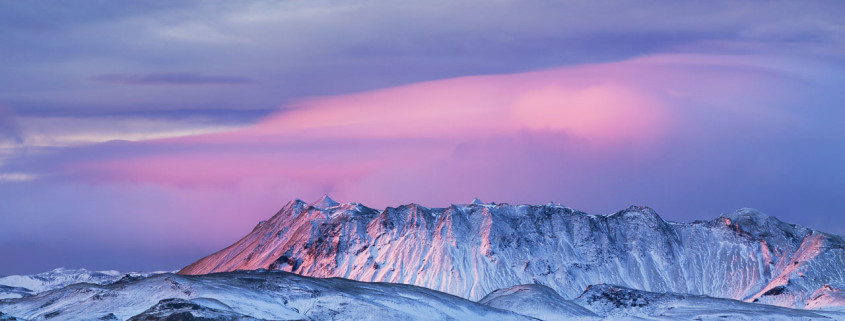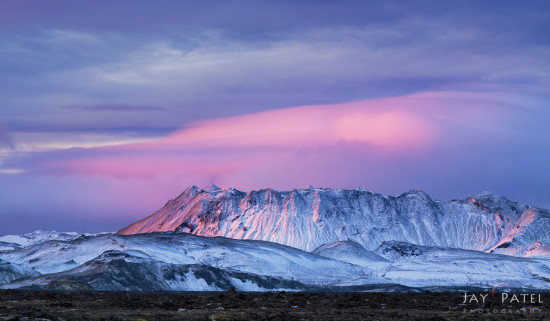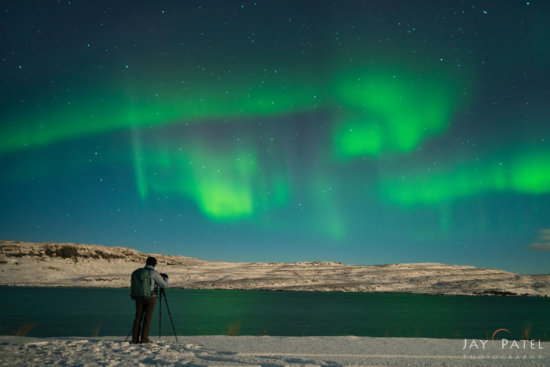5 Winter photography tips to capture stunning photos
Winter photography provides an excellent opportunity to create amazing landscape photos, but it also comes with its own unique set of challenges. In this article, I outline some of the tips I’ve learned along the way that may help you to not only create incredible winter photos, but also allow you to remain comfortable with functioning camera gear to operate in these extreme cold weather conditions.
Staying Comfortable
If you’re not comfortable and warm while on location, then your entire winter photography outing is going to be a struggle. I focus on the warmth pyramid of feet, hands, and face. In addition, I operate under the notion that heat packs are my best friend! This may sound like common sense, but a solid pair of cold weather socks along with a couple heat packs slid down the ankle of each boot is the winning combination for me.
With regards to your hands, if you’ve ever tried to operate your camera when your fingers are a couple shakes away from frozen, then you understand just how difficult this can be. It’s a rather weird feeling when you lose basic dexterity of your hands so a good pair of winter gloves is critical. I use a pair of full-fingered gloves where the index finger and thumb open to make camera adjustments easier.<
Last and certainly not least is a face cover to not only keep your face warm, but to also keep your breath away from your camera when you lean in to compose your shot. The warmth from your breath, especially in a cold environment, contains a great deal of moisture and can freeze on the back of your camera. This could create all sorts of potential issues and is something you certainly want to avoid.
Battery Power
Now that your human element is comfortable, we need to ensure your camera has enough battery power to operate effectively. Batteries are highly sensitive to extreme cold temperatures so keeping them warm and away from frigid conditions is key. I keep mine in an interior pocket close to my body to avoid the dreaded winter weather battery drain. In extreme cold weather situations, I add a heat pack to my battery pocket as well. As soon as you remove the battery from your pocket, the power drain begins. I suggest waiting until you’re completely set up and ready to shoot before placing a battery in your camera.
Camera Settings
You’re comfortable, camera’s comfortable… next we turn our focus to your camera settings.
The most important piece of information to know is that snow creates a great deal of confusion for your camera’s metering system. If you rely solely on your camera to determine “correct exposure” then there’s a good chance you’ll be left with gray and rather dull looking snow. The best way to combat against this is to overexpose your image by around 1 to 1.5 stops. If you’re not confident in the exposure settings you have dialed in, bracket your shots by a stop or two over and under your initial exposure to ensure you capture the entire tonal range of your scene.

Camera setting to capture fresh snow in winter
Seal It Up
There’s a couple schools of thought here with regards to what steps should be taken at the conclusion of your shoot. Some folks think you should place your camera and lens in a sealed bag while you’re outdoors. This locks in the outside air while also removing any chance that warmer air from your vehicle or house can enter and create condensation on the internal components of your camera. Others believe this is overkill and that you should leave your camera and lens in your camera bag zipped up for a couple hours after returning from your shoot. I’ve used both strategies and haven’t, knock on wood, encountered any condensation build-up issues on any of my camera gear as of yet. More than likely, either solution works fine.
Post-processing
When it comes to post-processing, your winter images you’ll want to pay close attention to your white balance and exposure. Both can prove to be troublesome due to the reflective characteristic of snow. On an overcast day, snow can take on a yellowish gray color. Under a clear blue sky, it can appear to have a bluish tone. It’s important to take good mental notes while you’re on-location regarding how the scene looked. This way, you’ll know how to best replicate the natural look in post-processing.
Winter is probably my overall favorite month for photography, but it requires a different approach to almost every aspect of the photographic process. Winter photography involves many additional steps from the clothing you wear to the process in which you shoot. But this additional work is usually rewarded with images that many folks wouldn’t dare venture out in the elements to capture.








